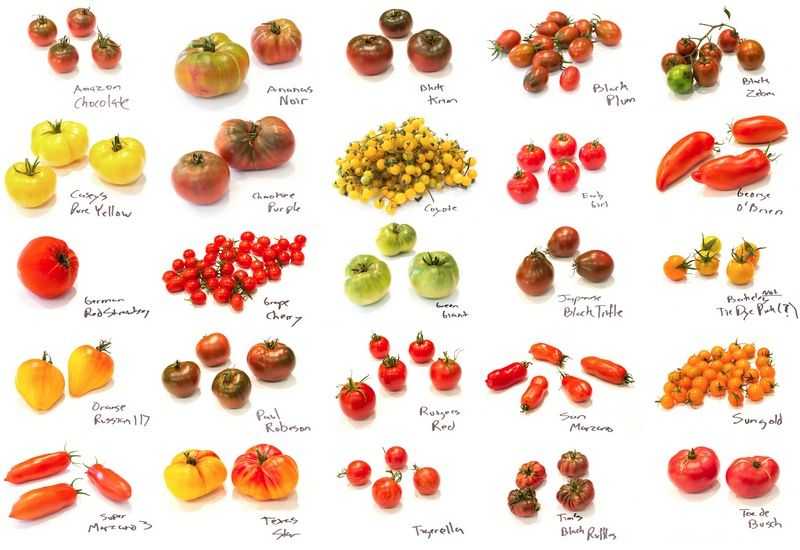
Udi’s Sprouts continue to grow and flourish. To mark the New Year, the company proudly presents a great new product: a tray for growing sprouts at home! The sprouts come to you on a comfy bed of soil. You choose when to pick them, and enjoy super-fresh herbs in the precise quantity you prefer.
Choose a tray today from a great range of sprouts: broccoli, alfalfa, kale, radishes, sunflowers, or a combination of two.
Order your personal sprout tray today via Chubeza’s order system!
___________________
The tomato holds a proud place in your boxes all year long, but in summertime she’s in full glory and flavor. As a hot season bonus, she is now joined by her sweet little cousin, the cherry tomato. Sometimes her banality makes us take the tomato for granted. Thus, this fruit of love, which marks the close of the trilogy of our summer Selenium family tale, takes the starring role in this week’s newsletter.
Let’s start with the family tree: the tomato’s fellow members of the selenium family are the eggplant and summer peppers, the (winter) potatoes, and… tobacco(!), plus a host of other plants, including wild and cultivated ornamental species numbering over 2,800 different varieties.
Tomatoes are a tropical plant originating in Central America. The world’s first tomatoes probably grew in today’s Peru and Ecuador, then migrated north to Mexico to be raised by the Aztecs, who gave them the name tomatel. The first wild tomatoes were very small, sweet, and concentrated in taste. (Sound familiar?) As the tomato was cultivated and domesticated, larger varieties were also selected and raised, but apparently the Aztecs and Incas began by growing tiny cherry tomatoes.
The habitants of America raised the tomato and realized its value. When the Spanish encountered this unfamiliar vegetable, they were primarily struck by its beauty and brought it to Europe in the 16th century. The wealth of tomato varieties offered a wide selection of sizes, colors, shapes and flavors. Among the imported varieties were also yellow tomatoes, perhaps the origin of the name that stuck: pomodora – a golden apple in Italian, later corrupted by the Spanish and French to pomme d’amour – the apple of love. The Arabic name bandora probably derives from a corruption of the Italian name.
It was Yehiel Mikhal Pines, who worked together with Eliezer Ben-Yehuda to revive the spoken Hebrew language, who renewed the tomato’s name when he translated the German Liebesapfel (love apple) to the Hebrew agvaniah, from the root ע.ג.ב- “to desire, lust for love.” Rav Kook attempted to find an alternative “pure and clean” Hebrew name for the vegetable. Prompted by the tomato’s red hue, the venerable rabbi suggested admonia (which never really caught on). The Ben-Yehuda household also took exception to the immodest agvaniah title, and suggested the name badura, Hebraizing the Arabic bandura. For some two decades, agvaniah and badura coexisted, each with its own fan club. In the end, love and desire won out, and agvaniah it was.
It’s hard to imagine worldwide cuisine and Mediterranean cuisine without tomatoes, the queen of the salad, shakshuka and s’chug, the princess of Italian pasta and pizza sauces and the darling of sea and land dishes of Spain, Provence, Greece and Turkey. It’s hard to believe that history mounted the tomato atop European tables only 200 years ago, and that it was completely unknown in the Western world before Columbus’s grand discovery of America…
But when the tomato made its debut in Europe, it was first raised only as an ornamental plant. The ladies of 16th century haute couture adorned their hair with tomato blossoms for special occasions. Health experts of the time warned against the fruit, which they considered toxic. (We’ll explain this in a minute.) The golden tomato may have ended up forgotten in a corner, if not for the initiative of two 18th century Italian monks who brought the red variety from South America to grow in their yard in the lates 1700s. Here, in southern Italy, red tomatoes met their first great success among the common people. (Thanks to their courage and to their lack of choice, these folks were willing to try out unfamiliar vegetables that the aristocracy shied away from, and everyone enjoys today.) The first written mention of tomato sauce appeared in a Neapolitan abbot’s 1778 book, which recommended its use to accompany meat and fish (not yet pasta or pizza). The 19th century became the great era of the tomato, recognized worldwide and even making a maiden appearance in Israel, brought to us by French monks.
As mentioned, the tomato was not very warmly received upon its initial debut, and for good reason: the tomato belongs to the selenium family, which includes plants that are indeed poisonous and harmful to health. This toxicity originates from the alkaloids found in various parts of the plant. Alkaloids are organic compounds of carbon, hydrogen, nitrogen and oxygen, usually plant-based in origin. They are considered to have an influence on the function of nerves, muscles and the digestive system, apparently to protect the plant from pests and animals. The infamous alkaloid of the selenium family is the solanine, which gave it its name, and exists in various levels in members of this plant family. The solanine content in edible selenium plants is minute, and is reduced by an additional 40-50% in cooking, thus readily consumed by most of us with no particular problems.
Tomatoes contain lycopene, the pigment that gives them (as well as watermelons) their red color, considered to be a hue that piques appetite and lust. Lycopene is a very potent antioxidant. Scientists claim that it is one of the most active “predators” of free radicals in nature. (Free radicals are the harmful substances that accelerate the processes of aging and disease). Lycopene can be beneficial in battling various types of cancer, particularly prostate, lung and pancreatic cancer. Together with other tomato components, it also contributes to reducing the risk of heart disease and stroke. Lycopene’s ability to act as an effective antioxidant may also promote the healthy function of eye and brain, and protect against harmful sunrays. The tomato is rich in Vitamin C, which helps reduce the risk of heart disease, stroke, cancer and probably cataracts and complications of diabetes.
Some half-century ago, most of the tomatoes on the market were large-sized. While diminutive cherry tomatoes (which, as mentioned, probably originated in Central America) were available, they were relatively rare.
Although sometimes grown in vegetable gardens, they were almost never to be found in large fields or local supermarkets. Like in the early days of their big tomato sisters, cherry tomatoes were once mainly used as ornaments, not for consumption. The reason was apparently their very limited shelf life. Unlike large tomatoes, which over the years were developed to varieties with a prolonged global shelf life, cherry tomatoes did not rate similar treatment at that particular stage.
The drastic change came about in the 1970s, generated by the British chain Marks and Spencer. While the chain used cherry tomatoes to decorate store displays, there were those who thought it might be nice to sell them for consumption as well. However, to do so they would need to improve the taste and staying power of tomatoes then available. (Cherry tomatoes of the time were grown mainly for display, thus picked too early, with a thick, annoying peel.) Marks and Spencer approached Bernard Sparks, a farmer who grew tomatoes for them, with the request to develop more successful cherry tomatoes, with a good old-fashioned taste. Mr. Sparks’ numerous attempts to create cherry tomato hybrids eventually reached satisfactory results. In the 1980s, Marks and Spencer began to market the first of their cherry tomatoes in many European countries and overseas as well.
Simultaneous to this development, a top Marks and Spencer executive, food technologist Nathan Goldenberg – a British Zionistic Jew who kept close tabs on agricultural developments in Israel – approached two professors from the Faculty of Agriculture in Rehovot, Nachum Kedar and Chaim Rabinowitz, who were then involved in adapting tomatoes to Israeli growing conditions and extending their shelf life. Their research led to the creation of tomatoes which ripened slower on the plant, reaching the ultimate sugar level at ripening and top durability in shipping. Goldenberg suggested that they apply these developments to cherry tomato varieties as well. Their combined efforts resulted in the development of highly successful species which reached the markets in the 1990s. Thus, over the past forty years, the sweet, delectable cherry tomatoes have starred in nearly every kitchen and salad bowl.
Most of the tomatoes we know are indeed rosy red, but the big picture boasts a wide, colorful, rich range of varieties. In most agricultural areas, a small variety of tomatoes are grown, yet there are also those who work tirelessly to preserve heirloom varieties of tomatoes (as well as other plants and vegetables).
Cherry tomatoes sport a vast array of colors, shapes and sizes, and also bear names of other fruits: date cherry, pear cherry, grape cherry, and more…
Enjoy the Last Week of Summer Vacation, with our best wishes for slow ripening, maximum sweetness and longevity!
Alon, Bat-Ami, Dror, Orin and the entire Chubeza team
________________________________________________
WHAT’S IN THIS WEEK’S BOXES?
Monday: Onions, lettuce, parsley/coriander/basil, eggplants (baladi or Japanese finger eggplants)/potatoes, cherry tomatoes/long Thai lubia beans, butternut squash, sweet potatoes, corn, tomatoes, cucumbers, okra/edamame.
Large box, in addition: Sweet red bell peppers/hot peppers (green), slice of pumpkin, scallions.
FRUIT BOXES: Apples, mangos, plums/pears/avacadoes, pomegranites. Large box: Larger quantities of all of the above, plus blueberries.
Wednesday: Onions, lettuce, parsley/coriander/basil, eggplants (baladi or Japanese finger eggplants), okra/long Thai lubia beans, butternut squash, sweet potatoes, sweet red bell peppers, tomatoes, cucumbers, edamame/slice of pumpkin.
Large box, in addition: Corn/popcorn, cherry tomatoes, , scallions.
FRUIT BOXES: Apples, mangos, pears, pomegranites. Large box: Larger quantities of all of the above, plus avacadoes.











